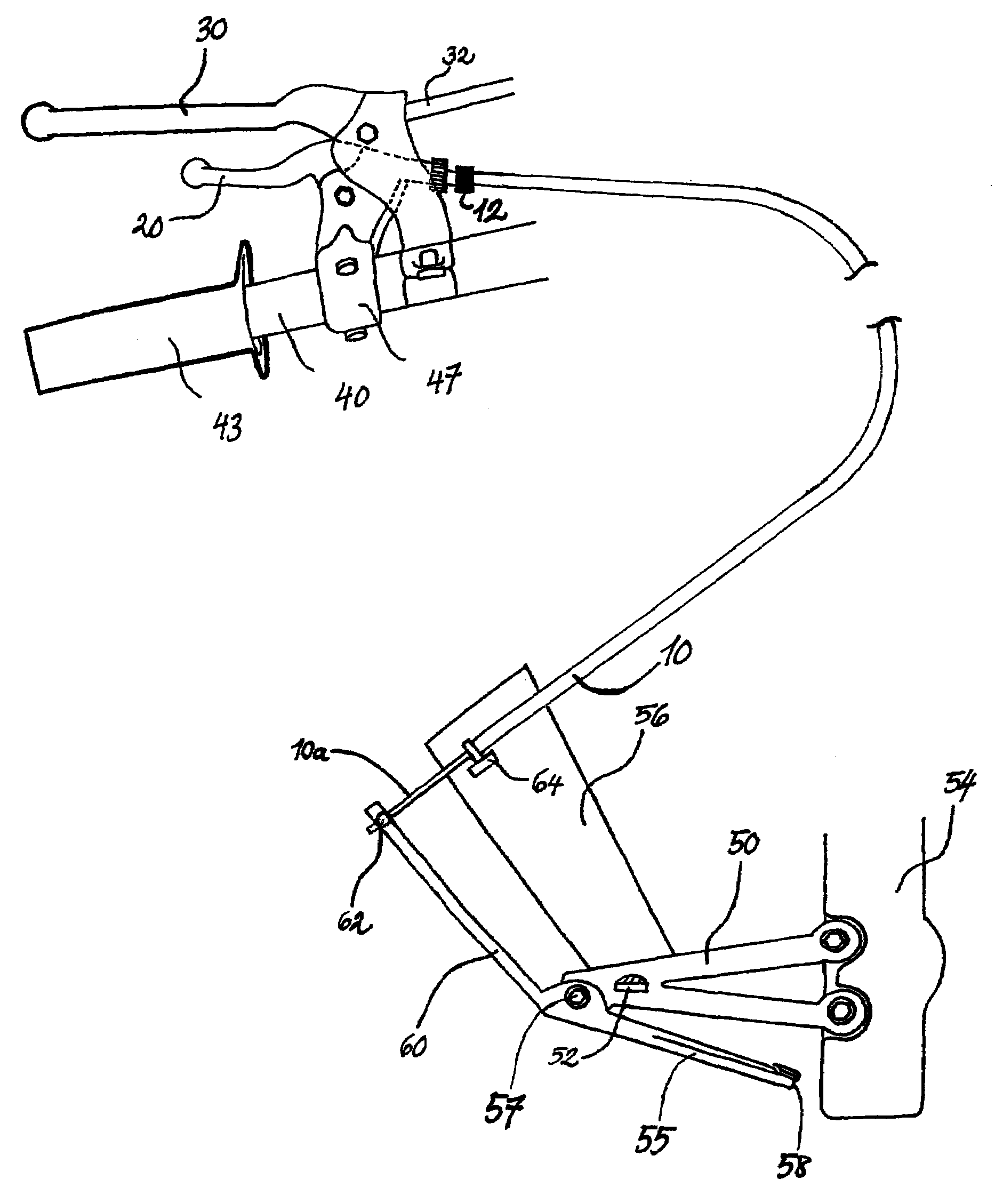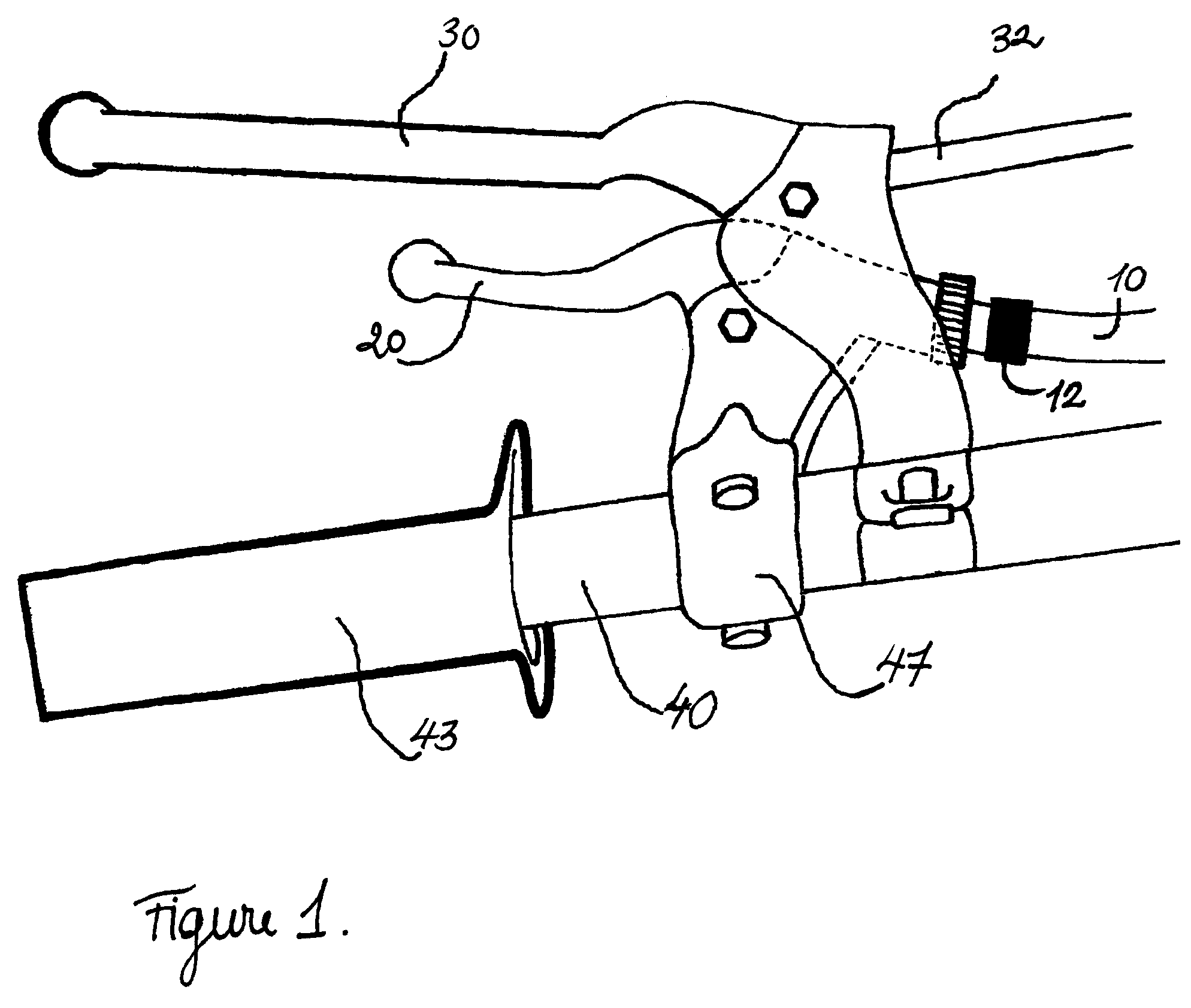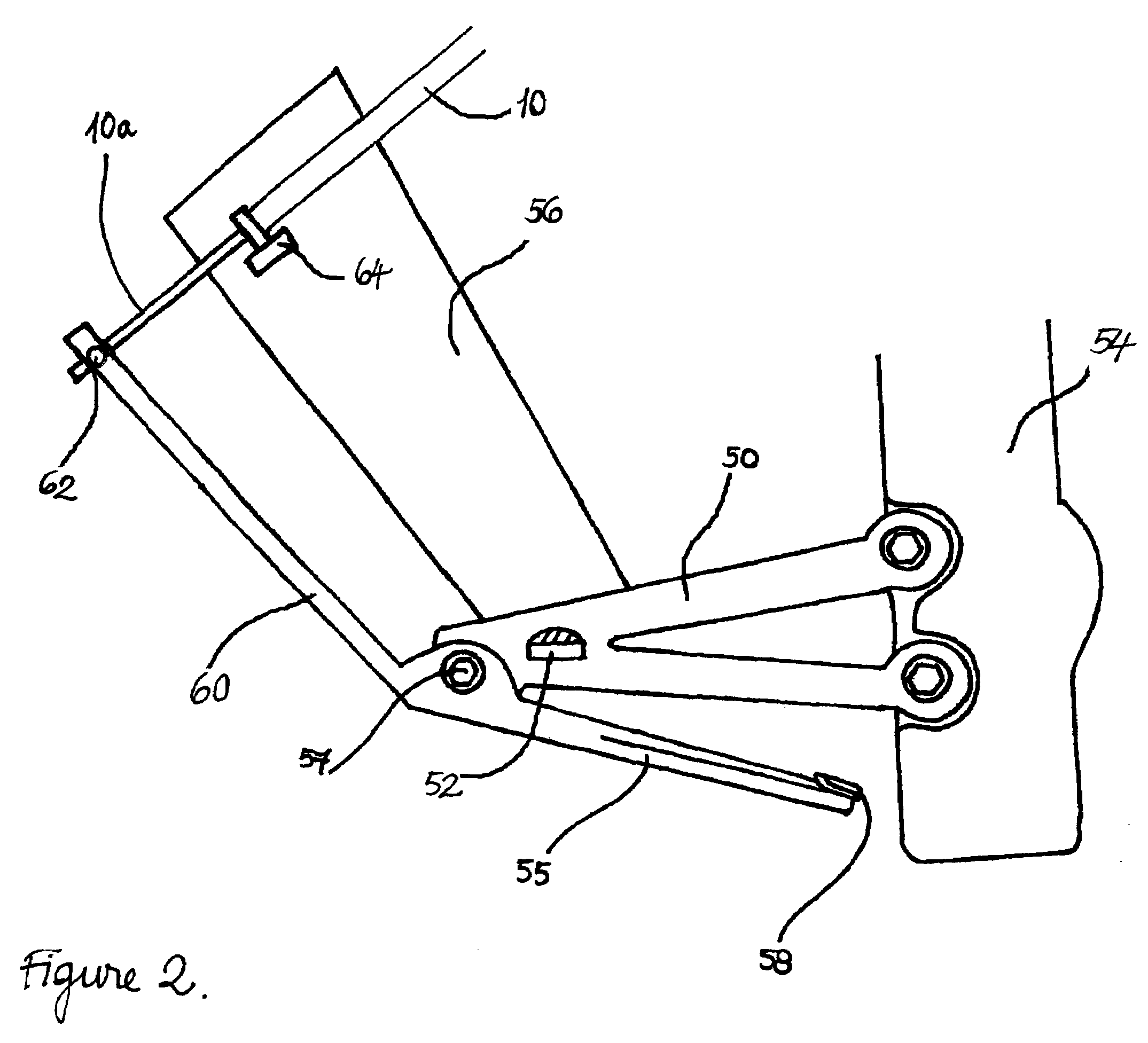Motorcycle rear-wheel braking system operating mechanism
a technology of rear-wheel braking and operating mechanism, which is applied in the direction of braking system, cycle brake, cycle equipment, etc., can solve the problems of user movement being somewhat awkward, difficult to press down on the right foot pedal to brake, etc., and achieves the effect of safer driving in traffic or small in siz
- Summary
- Abstract
- Description
- Claims
- Application Information
AI Technical Summary
Benefits of technology
Problems solved by technology
Method used
Image
Examples
Embodiment Construction
[0017]The present invention is an interconnected operating mechanism for a motorcycle hydraulic rear-wheel braking system. As shown in FIG. 1 of the present invention, on the motorcycle left handlebar 40 there is a wire cable 10. The wire cable 10 that is used preferably consists of an inner steel wire cable with a flexible outer casing, similar to what is used on most motorcycle control systems. The wire cable 10 is functionally connected to the rear-wheel hand brake lever 20, mounted on the handlebar 40 by a clamping mechanism 47 typical to motorcycle control levers. The rear-wheel brake lever 20 is mounted and rotated downward under the larger clutch lever 30 mounted inboard on the handlebar 40. The positioning of the rear-wheel brake lever 20 and the clutch lever 30 is defined with respect to their linear position along the longitudinal axis of the handlebar 40. There is ample room between the two levers 20 and 30 on the left handlebar 40 to ensure safe and efficient operation. ...
PUM
 Login to View More
Login to View More Abstract
Description
Claims
Application Information
 Login to View More
Login to View More - R&D
- Intellectual Property
- Life Sciences
- Materials
- Tech Scout
- Unparalleled Data Quality
- Higher Quality Content
- 60% Fewer Hallucinations
Browse by: Latest US Patents, China's latest patents, Technical Efficacy Thesaurus, Application Domain, Technology Topic, Popular Technical Reports.
© 2025 PatSnap. All rights reserved.Legal|Privacy policy|Modern Slavery Act Transparency Statement|Sitemap|About US| Contact US: help@patsnap.com



